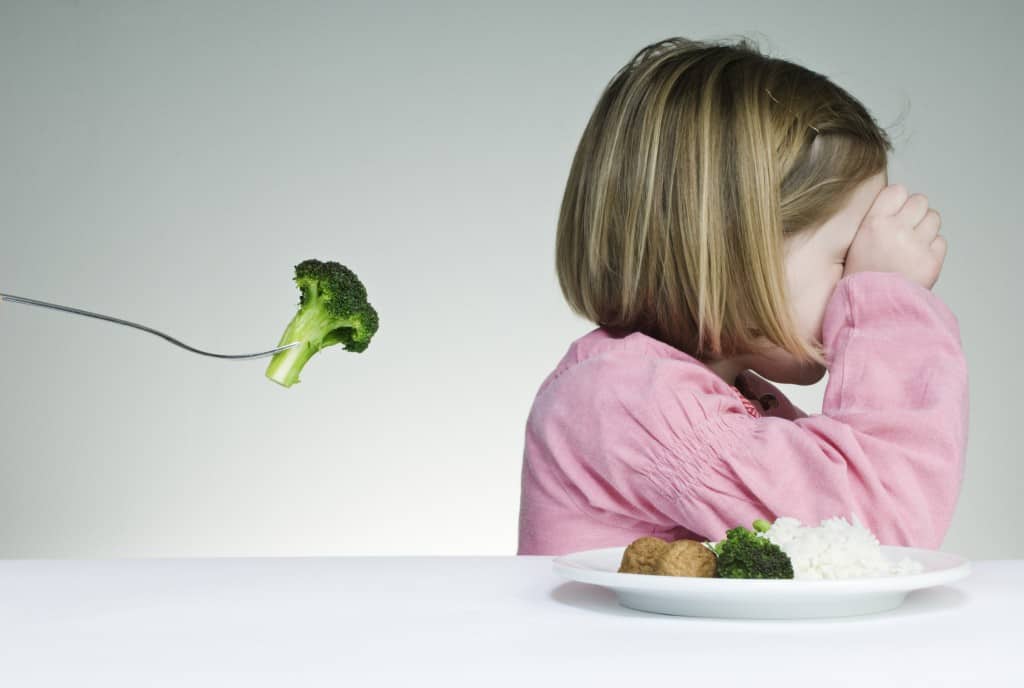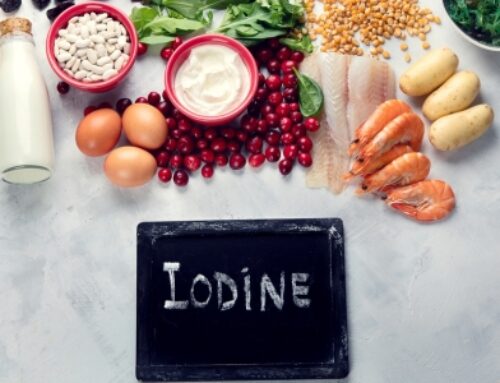
Feeding fussy eaters can be a real challenge and meal times can easily become stressful and unenjoyable for both you and your child. You know they need to be eating healthy food: fruits, vegetables, whole grains and lean meats; but how are they supposed to stay healthy when you can’t get them to eat the food in the first place?
Here is my guide to raising healthy eaters and good toddler nutrition. Once you understand your little person a little better in terms of their food preferences and appetite, you’ll have a better idea on how to start getting some healthy food into their tummies and seeing them become happy, confident eaters.
Be aware of these important health issues for toddlers
Obesity
The most recent Australian health survey reported that 25% of our nation’s children are either overweight or obese.
Being overweight during childhood presents some significant health problems for children, both physically and psychologically. The chances of them being overweight or obese as an adult is increased and so is the risk of developing some kind of preventable chronic disease – heart disease, diabetes or cancer.
Overweight and obesity is contributed to by our genetics but it’s our environment that matters the most.
Obesity is caused by an imbalance between the energy we consume through food and the energy we expend through our metabolism and physical activity. A long term positive energy balance eventually leads to weight gain and too much weight gain leads to obesity. In children, as well as in adults, the problem can’t be blamed on one aspect of their lifestyle, however it generally comes down to a high energy intake, usually from a high fat diet, and low levels of physical activity.
When it comes to feeding our toddlers we need to be mindful that the eating habits they are developing and the food behaviours they are watching will stay with them for life.
Dental Caries
Regular consumption of foods that are high in sugar can lead to the development of dental caries in young children.
Soft drinks, fruit juice, flavoured milks and cordial are not necessary in the diets of toddlers and if consumed in excess can cause poor dental health.
High sugar foods that are sticky, such as lollies, candy and dried fruit are even worse as they can stick to the teeth and cause decay more quickly. It’s best to keep these foods as a very occasional treat.
Constipation and Diarrhoea
Toddlers need to consume 14g of fibre per day for the maintenance of good bowel health and to prevent constipation. Good sources of fibre include: fresh fruits and vegetables, lentils and legumes, whole grains, wholemeal and multigrain bread, wholemeal pasta, brown rice and high fibre breakfast cereals. Constipation can also be the result of insufficient fluid intake so make sure your child always has plenty of water to drink.
Diarrhoea in children can occur from the consumption of too much fruit juice. Fructose, the sugar in fruit, is only partially absorbed by the small intestine. If you consume too much, which is easy for a little person like a toddler, all this excess fructose ends up in the large intestine which causes a watery stool and subsequently, diarrhoea. Too much milk can also cause diarrhoea in small children.
Iron Deficiency
You may not be aware that toddlers can be at risk of iron deficiency. Toddlers and preschoolers have a high iron requirement, compared to adults, because of their rapid growth rate.
Toddlers who drink too much milk or sugary drinks such as fruit juice, soft drink or cordial may be at risk of iron deficiency. This is because milk and sugary drinks are poor sources of iron and excess consumption of these drinks dulls their appetite for more nutritious foods. They are not hungry enough to eat other food and thus their diets don’t supply adequate iron to meet their body’s needs.
Consumption of more than 600ml of milk a day is associated with a increased risk of iron deficiency in preschool aged children. You may also find that you child is unnecessarily fussy at meal times because they simply are not hungry enough to eat the food you’re offering them because too many milk or sugary drinks have decreased their appetite.
Iron deficiency anemia can lead to delayed cognitive development, delayed physical development and decreased resistance to infection.
Food neophobia and learned food preferences
Children’s preferences for foods are either innate, meaning they are born with it, or they are learned, through their experiences and exposure to different foods.
Food Neophobia
Food neophobia is the fear of trying new foods or the initial rejection of new foods and is very common in small children. It tends to peak at around 2-3 years of age! Toddlerhood! Different children display neophobia to varying degrees and some children will be naturally more neophobic than others.
Although it’s innate in children, there are things you can do to help your highly neophobic child to accept new foods become a confident happy eater. Read on for the tips and tricks section below.
Learned food preferences
Children also learn to like or dislike certain foods based on a number of different factors. For example the preference for fatty and salty foods is a learned preference due to repeated exposure to fatty and salty foods.
Children also connect particular foods with the consequences of eating that food – whether positive or negative. So they associate different foods with the particular environments that ate it in and with certain memories.
The toddlers appetite
A toddlers appetite is very different from that of an adults. The great thing about toddlers is that they don’t have all the social, cultural, emotional and psychological reasons for eating that adults do either.
The appetite of a toddler is simple. If a toddler stops eating that are full and if a toddler continues eating they are hungry.
As parents, respecting these built in mechanisms helps our child grow up knowing to stop eating when they are full and to find something to eat when they are hungry. In order to survive in such a food abundant culture, cultivating the skill of ‘stop eating when you are full’, is important for their future health, especially in the prevention of obesity. We should not force our children to finish their plate, we want them to stop eating when they are full and learn to listen to their bodies. How many of us continue eating, even when we feel full, because we were brought up to not leave any food on our plates?
The same goes for the other extreme. Adults can get into bad habits of skipping meals because we are busy or we forget. Meal skipping is a poor dietary habit to fall into and can lead to binge or overeating at the end of the day. Encourage your child to ask for food when they are hungry.
Tips and tricks to get them eating
1. Never give up
Research has shown that repeatedly offering and exposing your child to the rejected food will do wonders in getting them to accept the new food you are offering. If you offer a food and it gets rejected, don’t worry, just try again the next day. It can take up to 10 exposures before a child will accept a new food, so be persistent, it will happen eventually!
2. You are NOT an A La Carte Restaurant
When you offer your child a meal, if they wont eat it, don’t stress. Do your best to encourage them to at least taste it and then tell them that meal time is over. Don’t offer them anything else to eat. You are not a restaurant where they can send the meal back and get something else, you are a busy parent who only needs to cook one meal for the family.
A child will quickly learn, even as young as 8 months old, if they refuse a new food or something they’re not keen on, you’ll eventually offer them something they like. Do this and you are creating a fussy child. Don’t worry about them starving, they wont. Remember: a toddler wont let themselves go hungry and if they do go hungry because you have a stubborn one on your hands they’ll quickly learn they either eat what’s put in front of them or they don’t eat at all.
A great rule to follow is: The parent decides what and when the child eats and the child decides how much they eat. You are the parent, you decide what’s on the menu and they either eat it or they don’t.
3. Offer a variety of foods as early as possible
The more food variety children experience at a younger age the less neophobic they will become. Don’t assume they won’t like a food and then not give it to them. Give it a try, more often then not they’ll actually like it and if we follow rule number 1 then you know they’ll like it eventually!
By the time your child is 12-18 months they should have at least tasted most fruits and vegetables, a number of the family meals, cheese, yoghurt, meats, chicken, legumes, bread, rice, pasta, a few mild spices, herbs etc
4. Keep it familiar
Don’t offer a new food in a new environment. Research shows that combining a new food with a new environment increases the child’s reluctance to try and accept it. As much as you can, keep meal times consistently at home.
5. Keep it Stress Free
Kids have the ability to associate food with certain situations, whether they be good or bad. If meal times are stressful and you are cranky or distracted, you will create an atmosphere where your kids don’t feel confident enough to give the new food a try. Stay happy, focused and enjoy the ride!
6. Turn off the TV
When offering new foods and for meal times in general, turn off your TV, stereo, mobile phone and any other electronic devices. Too many distractions, noise and stimulation can make meal times more stressful than they need to be.
7. Become a Cheer Leader
Encourage, encourage, encourage! Tell your kids how proud you are of them for eating like a champion! The more positive associations kids have with meal times the more comfortable they will feel in trying and accepting new foods. Don’t reward with ‘junk food’, reward with words of affirmation!
8. Model healthy eating
Research shows that a child must see their parent, especially their mother, eat and enjoy the food that you are trying to get them to eat. It’s about modelling good eating habits in general, because ultimately our kids are going to learn the majority of their eating habits from their parents
If you need help with improving your own eating habits I offer one-on-one consultations that can help you lose weight and improve your general health.
9. Harness positive peer pressure
Research has shown that a child is more likely to try and accept a previously rejected food if they are eating with children who are eating and enjoying the particular food. Join forces with your friends and neighbours and encourage your children to try new foods with the power of their peers.
10. Resist the temptation to use food bribes
“Eat all your pumpkin up and mummy will give you some ice cream afterwards”. Although this technique may work to get them to eat a particular food it actually makes them dislike the food they have to eat and like the reward food even more than they did in the first place. This will make it even harder for you to get them to eat the main meal in the future. Reward your kids in other ways, stickers, stamps, star charts or a special story.
I sing a special song when my kids try new foods, it’s fun and interactive and it builds positive association with the food because meal times are enjoyable.
11. Always at the table
Kids thrive on routine and consistency. Your children will respond better at meal times if they are up, in their highchair, at the dinner table with the rest of the family for most of their meal times as you can. Toddlers and even children should always be sitting down while eating, it’s never recommended to let your child wander around while eating.



